How Climate Change is Affecting Wildlife and Biodiversity
Climate change is not just a distant threat; it’s a reality that is reshaping our world right now. The profound impacts on wildlife and biodiversity are alarming, and they serve as a wake-up call for all of us. As temperatures rise and weather patterns shift, many species struggle to adapt, leading to a cascade of challenges that threaten the very fabric of our ecosystems. This article dives deep into the intricate web of life that is being unraveled by climate change, highlighting the urgent need for concerted conservation efforts to preserve our planet’s rich biodiversity.
One of the most significant effects of climate change is its ability to alter habitats. Imagine a lush forest, once teeming with life, slowly transforming into a dry, barren landscape. Rising temperatures and changing precipitation patterns can lead to such drastic shifts in ecosystems. For instance, wetlands may dry up, while other areas may experience flooding, creating a patchwork of habitats that can no longer sustain the species that once thrived there. The loss of habitat not only affects the plants and animals that call these places home but also disrupts the intricate relationships that exist within those ecosystems.
As climates shift, many species are forced to migrate to survive. This isn’t just a simple journey; it’s a race against time. Animals that rely on specific habitats may find themselves in unfamiliar territory, leading to new interactions between species that could have unforeseen consequences. For example, when polar bears move south due to melting ice, they may come into contact with species that have never encountered them before, leading to competition for resources. The ripple effects of these changes can alter entire ecosystems, making it crucial to understand how and why these migration patterns are changing.
Terrestrial species are particularly vulnerable to climate change. Think about the majestic snow leopards of the Himalayas or the vibrant butterflies fluttering through meadows; their survival is intricately tied to specific temperature ranges and habitats. As landscapes and temperatures change, these species face daunting challenges in terms of survival and reproduction. Altered breeding seasons, mismatched food availability, and increased competition can all threaten their existence. The urgency to protect these terrestrial habitats has never been greater.
Food sources for terrestrial species are deeply affected by climate change. As plant and prey populations shift due to changing climates, animals may find it increasingly difficult to locate the food they need to survive. For instance, if a migratory bird arrives at its breeding ground only to find that its food sources have disappeared, it may not be able to reproduce successfully. The delicate balance of these ecosystems is disrupted, leading to a decline in populations that rely on specific food webs.
Fragmentation caused by climate impacts can isolate species, making it harder for them to find mates, food, and shelter. Picture a once-continuous forest now sliced into patches by roads and urban development. This isolation can lead to decreased genetic diversity, making populations more susceptible to disease and less adaptable to environmental changes. The consequences of habitat fragmentation are dire, as they threaten the resilience of species and ecosystems alike.
Aquatic ecosystems are also facing significant challenges from climate change. Rising ocean temperatures, acidification, and changing salinity levels disrupt the delicate balance of marine life. Coral reefs, often referred to as the "rainforests of the sea," are particularly at risk. As water temperatures rise, coral bleaching occurs, leading to the death of these vital ecosystems. Fish populations are also affected, as they rely on specific habitats for breeding and feeding. The impacts on aquatic species are profound and require immediate attention to ensure their survival.
Some species are at a higher risk of extinction due to climate change. These vulnerable species include iconic animals like the polar bear and the orangutan, which face habitat loss and changing food availability. Conservation efforts are essential to protect these species and their habitats. Understanding the criteria for endangered species classification is crucial for prioritizing conservation actions.
Many species are now classified as endangered due to climate impacts. The urgency of their protection cannot be overstated. The criteria for these classifications often include population size, habitat range, and the severity of threats they face. Conservationists are working tirelessly to develop strategies that will help these species recover and thrive.
Effective conservation strategies are essential for mitigating the effects of climate change. These strategies include habitat restoration, creating wildlife corridors, and implementing sustainable practices that reduce human impact on ecosystems. By investing in these approaches, we can help protect wildlife and restore biodiversity, ensuring that future generations inherit a thriving planet.
It’s important to recognize that human activities significantly contribute to climate change, exacerbating its effects on wildlife. Urbanization, deforestation, and pollution are just a few examples of how our actions degrade ecosystems. Understanding the link between human behavior and environmental degradation is crucial for developing effective solutions.
Urbanization poses unique challenges for wildlife. Expanding cities disrupt habitats and create barriers for species trying to migrate or find food. However, there are strategies to create wildlife-friendly urban spaces, such as green roofs, wildlife corridors, and parks that provide refuge for local species. By integrating nature into our urban environments, we can help mitigate the impacts of climate change on wildlife.
Policies aimed at addressing climate change can significantly influence biodiversity outcomes. Legislation and international agreements play a vital role in wildlife conservation efforts. By supporting policies that prioritize sustainability and habitat protection, we can create a future where both people and wildlife can thrive.
- What is climate change? Climate change refers to long-term changes in temperature, precipitation, and other atmospheric conditions on Earth, primarily driven by human activities.
- How does climate change affect biodiversity? Climate change disrupts habitats, alters food availability, and forces species to migrate, leading to challenges that threaten biodiversity.
- What can be done to protect endangered species? Conservation efforts, habitat restoration, and sustainable practices are crucial in protecting endangered species and their habitats.
- How does urbanization impact wildlife? Urbanization disrupts habitats and creates barriers for wildlife, making it essential to implement strategies that promote wildlife-friendly urban spaces.
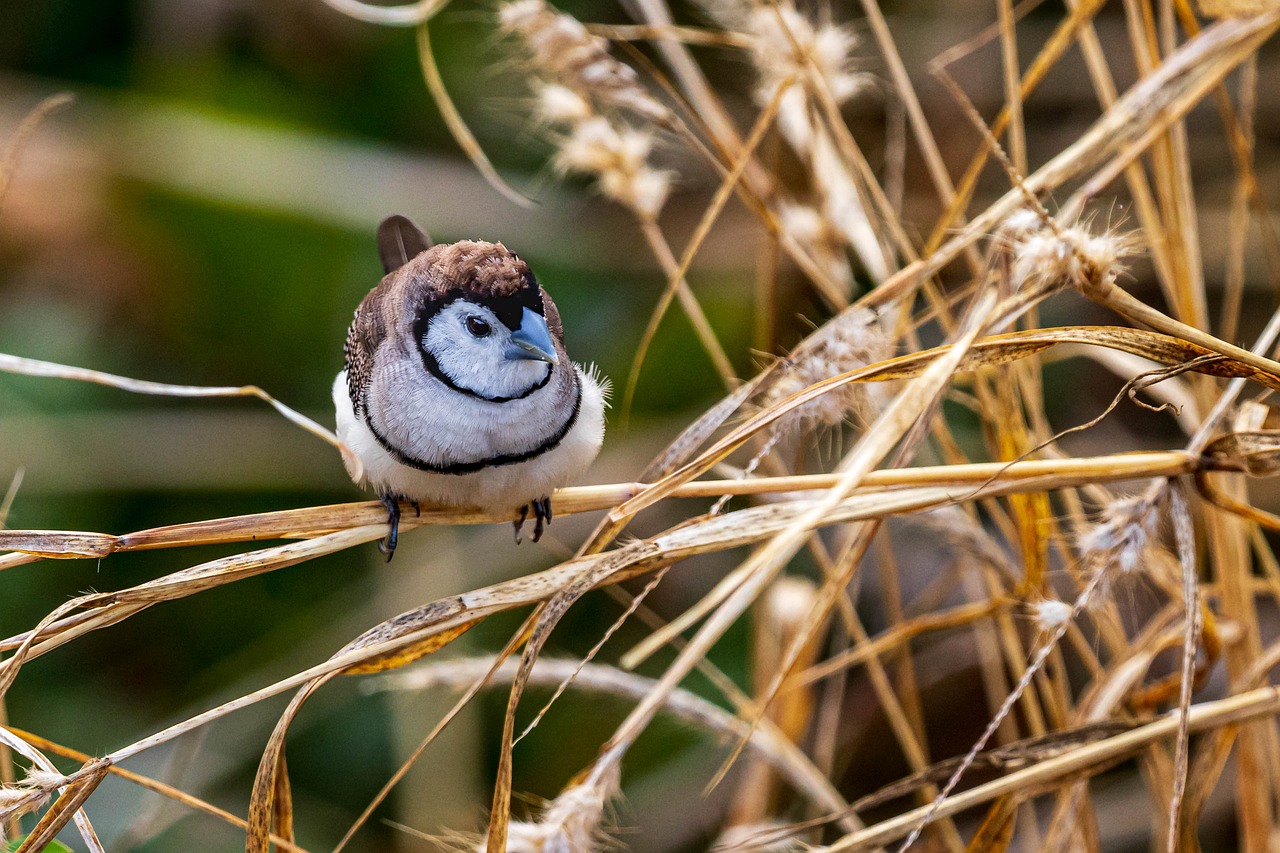
Impact on Habitats
Climate change is like a slow-moving freight train, and it’s barreling down on our ecosystems at an alarming speed. As the planet heats up, the habitats where wildlife thrive are undergoing profound transformations. Imagine a world where the cozy homes of countless species are suddenly too hot, too dry, or too wet. This is the reality we face as rising temperatures and shifting precipitation patterns wreak havoc on natural environments.
The impact on habitats is not just a minor inconvenience; it’s a matter of survival for many species. For instance, as temperatures rise, we see a shift in the distribution of forests, grasslands, and wetlands. These changes can lead to the disappearance of habitats that are crucial for many animals. Take the polar bear, for example. With the melting ice caps, these majestic creatures are losing their hunting grounds, which are essential for their survival. The Arctic, once a vast expanse of ice, is now increasingly becoming a barren landscape.
Moreover, the alteration of precipitation patterns can lead to extreme weather events, such as droughts and floods, which further destabilize habitats. When rain falls in torrents instead of gentle showers, it can wash away the delicate balance of ecosystems. In places where droughts become frequent, plants struggle to survive, which in turn affects the herbivores that rely on them for food. This creates a cascading effect that ripples through the food chain, impacting everything from insects to large mammals.
Interestingly, some species are attempting to adapt to these changes. For example, certain birds are shifting their migration patterns to follow the blooming of flowers or the emergence of insects. However, not all species can adapt quickly enough, and this is where the danger lies. The loss of biodiversity is a significant concern, as it weakens ecosystems and reduces their resilience to further changes. When you think about it, each species plays a unique role, like pieces in a puzzle. When one piece is missing, the entire picture becomes distorted.
In light of these challenges, conservation efforts are more important than ever. Protecting and restoring habitats can help mitigate some of the adverse effects of climate change. Initiatives aimed at reforesting areas, creating wildlife corridors, and preserving wetlands are crucial steps toward safeguarding the future of our planet's biodiversity. These efforts not only benefit wildlife but also enhance the resilience of ecosystems, making them better equipped to handle the changes that lie ahead.
In summary, the impact of climate change on habitats is profound and far-reaching. It’s a call to action for all of us. As stewards of the Earth, we must recognize our role in protecting these vital ecosystems. The clock is ticking, and the time to act is now.
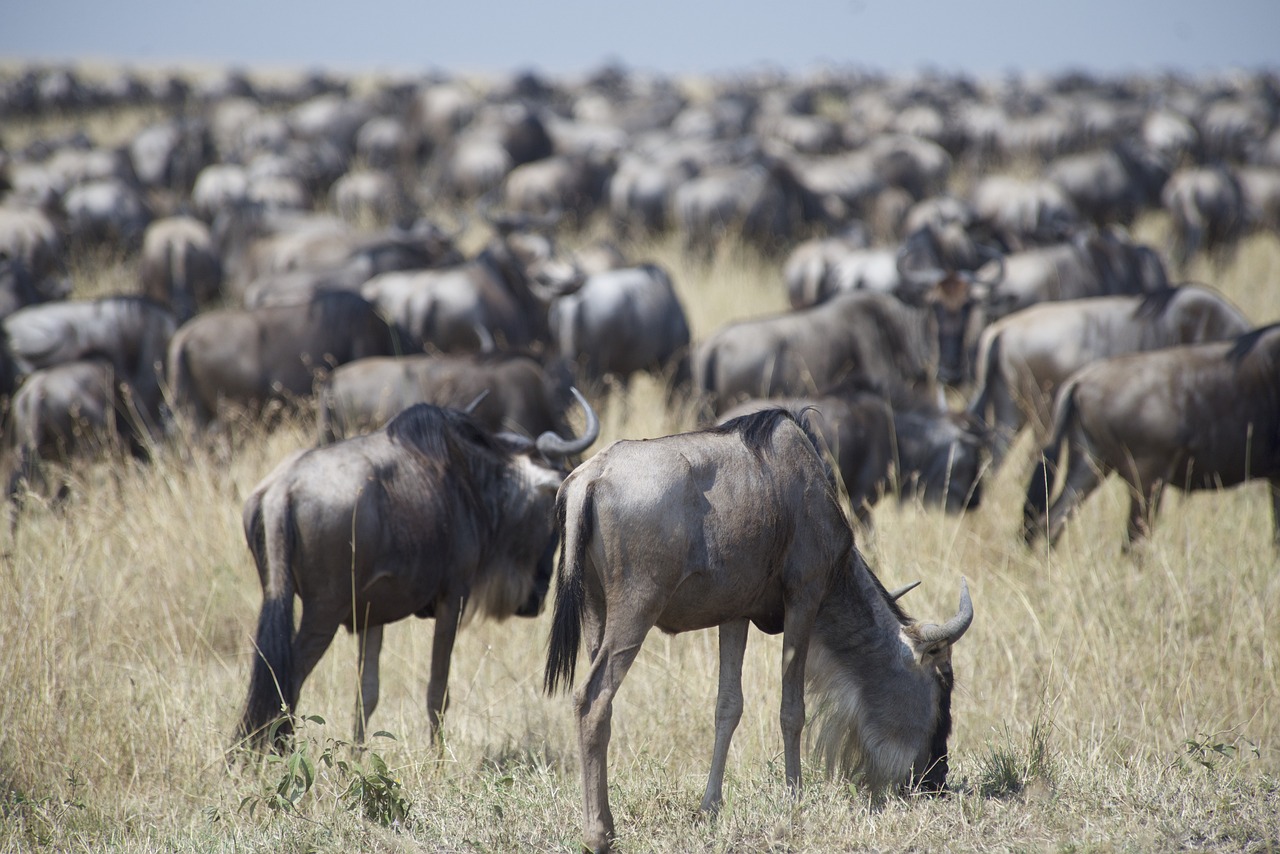
Species Migration Patterns
As the climate changes, many species are finding themselves in a precarious situation, forced to migrate to survive. This isn't just a matter of packing up and moving; it's a complex dance between the needs of the species and the shifting landscapes they inhabit. Imagine a game of musical chairs, where the music is the climate, and the chairs are the habitats. When the music changes, some species find themselves without a seat, leading to dire consequences for both them and the ecosystems they leave behind.
Migration patterns are not just about distance; they encompass timing, routes, and the very survival of species. For instance, birds that traditionally migrated south for the winter are now arriving at their destinations earlier than ever. This shift can lead to mismatches in food availability, as insects and plants may not be ready to support these hungry travelers. Similarly, marine species are also on the move, with fish populations relocating to cooler waters, which can disrupt local fishing industries and ecosystems alike.
One of the most striking examples of this phenomenon can be observed in the Arctic, where species like the polar bear are forced to travel greater distances in search of food due to melting ice. This not only affects their hunting patterns but also puts additional stress on their energy reserves. As these majestic creatures trek across vast stretches of open water, the risk of drowning increases, showcasing the harsh realities of climate-induced migration.
It's important to recognize that migration is not a universal solution. For many species, the ability to migrate is limited by various factors, including habitat fragmentation and human-made barriers. Roads, urban developments, and agricultural fields can create obstacles that prevent animals from reaching suitable habitats. When these barriers are combined with changing climate conditions, the result can be a recipe for disaster, leading to population declines and even extinction.
To illustrate the impact of climate change on migration patterns, consider the following table that highlights some key species and their changing migration behaviors:
| Species | Original Migration Pattern | Current Changes |
|---|---|---|
| Monarch Butterfly | South to Mexico | Arriving earlier and facing habitat loss |
| Arctic Tern | Antarctica to Arctic | Changing breeding grounds due to ice melt |
| Atlantic Cod | Traditional spawning grounds | Moving to deeper waters for cooler temperatures |
In essence, the migration patterns of species are becoming increasingly erratic and unpredictable, mirroring the chaos of climate change itself. As these animals navigate their new realities, the consequences ripple through ecosystems, affecting everything from predator-prey relationships to plant pollination. The urgency to understand and address these changes cannot be overstated; it is imperative that we work towards solutions that not only support wildlife but also restore the balance of our ecosystems.
- What factors influence species migration? Migration is influenced by climate, food availability, habitat conditions, and human activities.
- How does climate change affect animal behavior? Animals may change their migration timing, routes, and habitats in response to shifting climate conditions.
- Are all species able to migrate? No, not all species can migrate due to habitat fragmentation and other barriers.
- What can be done to help migrating species? Conservation efforts, habitat restoration, and reducing human impact are crucial for supporting migrating species.
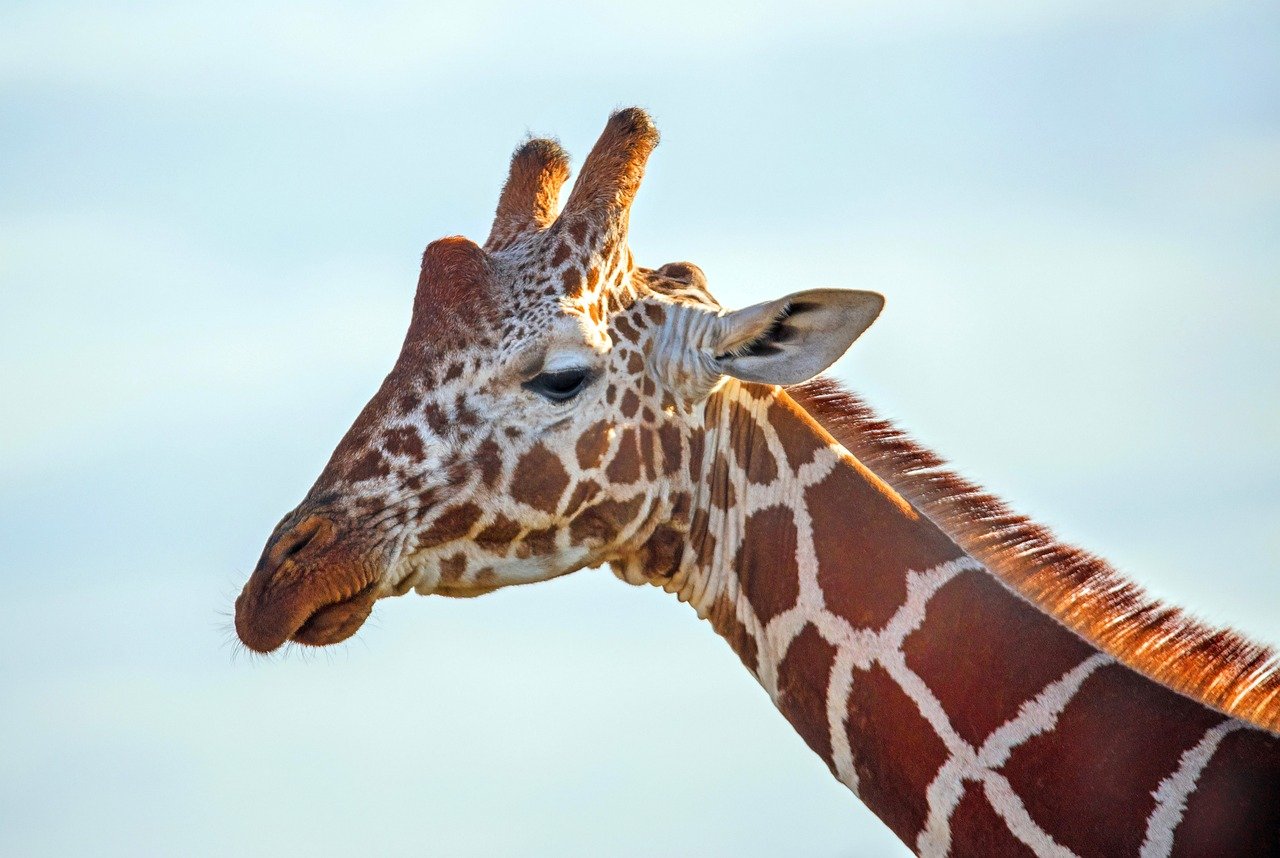
Effects on Terrestrial Species
Climate change is not just a distant threat; it is a reality that is reshaping the lives of terrestrial species right now. As temperatures rise and weather patterns become increasingly erratic, the habitats where these animals thrive are undergoing profound transformations. Imagine a once-thriving forest that now faces droughts or a grassland that is slowly turning into a desert. These changes can have devastating impacts on the wildlife that call these environments home.
One of the most significant effects of climate change on terrestrial species is the alteration of their habitat. Many animals have adapted to specific climatic conditions, and even slight changes can disrupt their survival. For instance, polar bears, which rely on sea ice to hunt seals, are finding it harder to find food as the ice melts away. Similarly, species like the red fox are expanding their range northward, encroaching on territories traditionally occupied by arctic foxes, leading to increased competition and potential displacement.
Moreover, the reproductive cycles of many terrestrial species are being affected. For example, some birds may find that their breeding seasons are now mismatched with the availability of food sources. If insects emerge earlier due to warmer temperatures, birds that rely on them for feeding their young may struggle to raise their chicks successfully. This mismatch can lead to lower survival rates and a decline in population numbers.
Another critical aspect to consider is food availability. As climate change alters plant growth patterns, the food sources for herbivores may become scarce or shift geographically. This can create a ripple effect through the food chain. For example, if a particular plant species that a herbivore depends on becomes less prevalent, it can lead to a decline in that herbivore's population. In turn, predators that rely on these herbivores for food will also be affected, leading to broader ecological consequences.
Habitat fragmentation is another significant concern. As climate change forces species to migrate or adapt, their habitats can become fragmented due to human development or natural barriers. This isolation can hinder genetic diversity, making it more difficult for species to adapt to changing conditions. For instance, small populations of animals may find it challenging to interbreed, leading to inbreeding and a decrease in resilience against diseases and environmental changes.
In summary, the effects of climate change on terrestrial species are profound and multifaceted. From altered habitats and disrupted reproductive cycles to changes in food availability and habitat fragmentation, the challenges are immense. It is crucial for conservationists, policymakers, and the public to recognize these threats and work together to implement strategies that will help protect our planet's biodiversity.
- How does climate change affect animal migration? Climate change alters weather patterns, which can shift the availability of food and suitable habitats, forcing animals to migrate to survive.
- What can be done to help terrestrial species affected by climate change? Conservation efforts such as habitat restoration, creating wildlife corridors, and implementing sustainable land-use practices can help mitigate the impacts of climate change.
- Are all species equally affected by climate change? No, some species are more vulnerable due to their specific habitat requirements, reproductive strategies, and reliance on certain food sources.
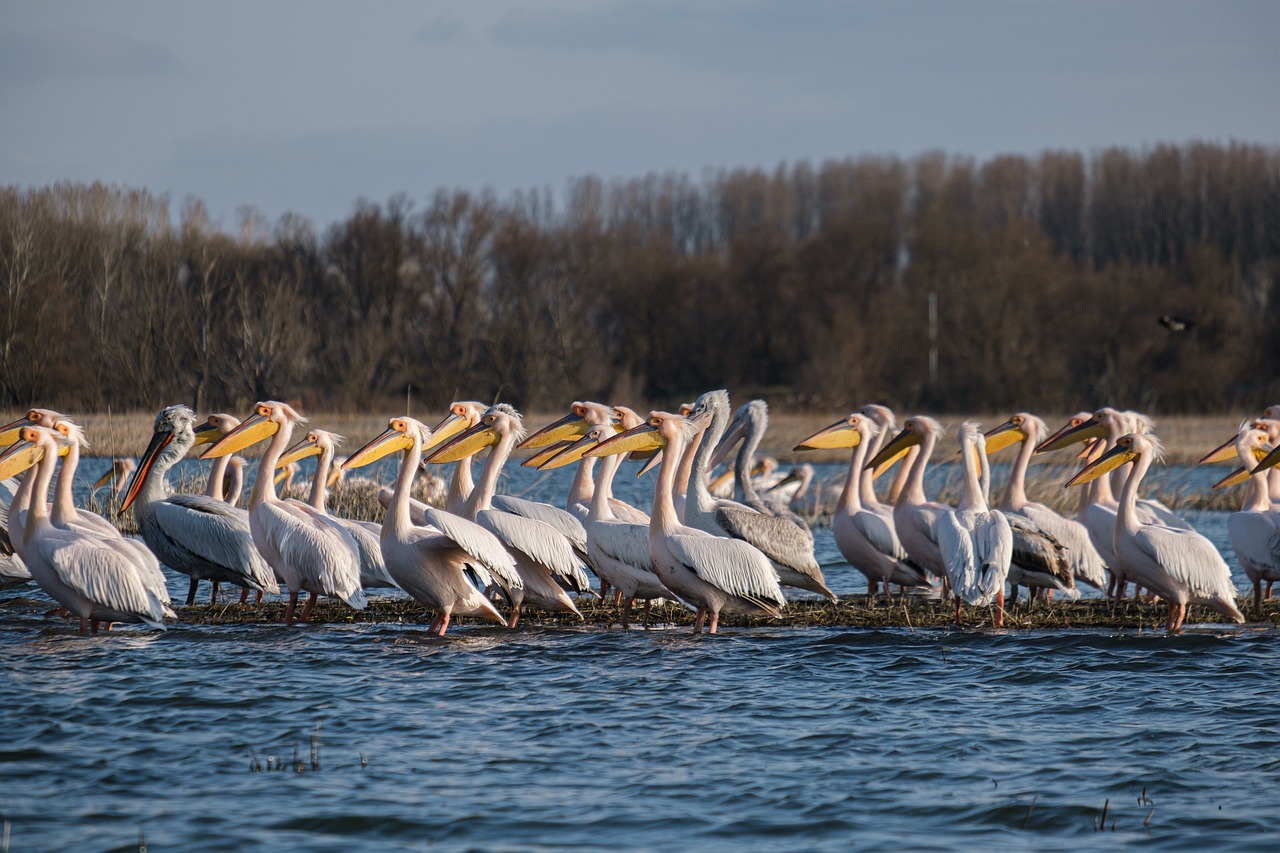
Changes in Food Availability
Climate change is like a giant, unpredictable game of musical chairs, and unfortunately, many species are being left without a seat when it comes to food availability. As temperatures rise and weather patterns shift, the delicate balance of ecosystems is disrupted, leading to significant changes in the availability of food sources for terrestrial wildlife. This can create a ripple effect that impacts not just individual species, but entire ecosystems.
For instance, consider the plight of herbivores like deer and rabbits. As their primary food sources, such as grasses and shrubs, begin to bloom earlier due to warmer temperatures, these animals may find themselves in a race against time. If they are unable to adapt their breeding cycles to match the new growth patterns, their young may be born into an environment where food is scarce. This mismatch can lead to decreased survival rates and a decline in population numbers.
Moreover, the changing climate also affects the distribution of plant species. Some plants may thrive in the new conditions, while others may struggle or even vanish. This can lead to a reduction in biodiversity, as specialized feeders that rely on certain plants for sustenance find themselves with limited options. For example, the iconic Monarch butterfly depends on milkweed for its lifecycle. If milkweed populations dwindle due to climate impacts, the butterflies face a dire future.
Additionally, predators are not immune to these changes. As their prey species struggle with food availability, predators may have to travel further or adapt their hunting strategies, which can lead to increased competition and stress within their populations. This scenario is particularly concerning for apex predators, which play a crucial role in maintaining the balance of their ecosystems.
To illustrate the impact of climate change on food availability, here’s a brief overview:
| Species | Food Source | Impact of Climate Change |
|---|---|---|
| Deer | Grasses, shrubs | Earlier growth cycles lead to food scarcity during critical breeding periods. |
| Monarch Butterfly | Milkweed | Decline in milkweed populations threatens their lifecycle. |
| Wolves | Deer, smaller mammals | Increased competition for food as prey populations decline. |
In conclusion, the changes in food availability due to climate change are profound and multifaceted. They not only threaten the survival of individual species but also jeopardize the health and stability of entire ecosystems. As we move forward, it is crucial to acknowledge these changes and take action to mitigate their effects, ensuring that wildlife has the resources they need to thrive in an ever-changing world.
- What are the main factors affecting food availability for wildlife? Rising temperatures, altered precipitation patterns, and habitat loss are key factors.
- How does climate change affect predator-prey relationships? Changes in food availability can lead to increased competition and stress among predators.
- What can be done to help preserve food sources for wildlife? Conservation efforts, habitat restoration, and sustainable land-use practices are essential.
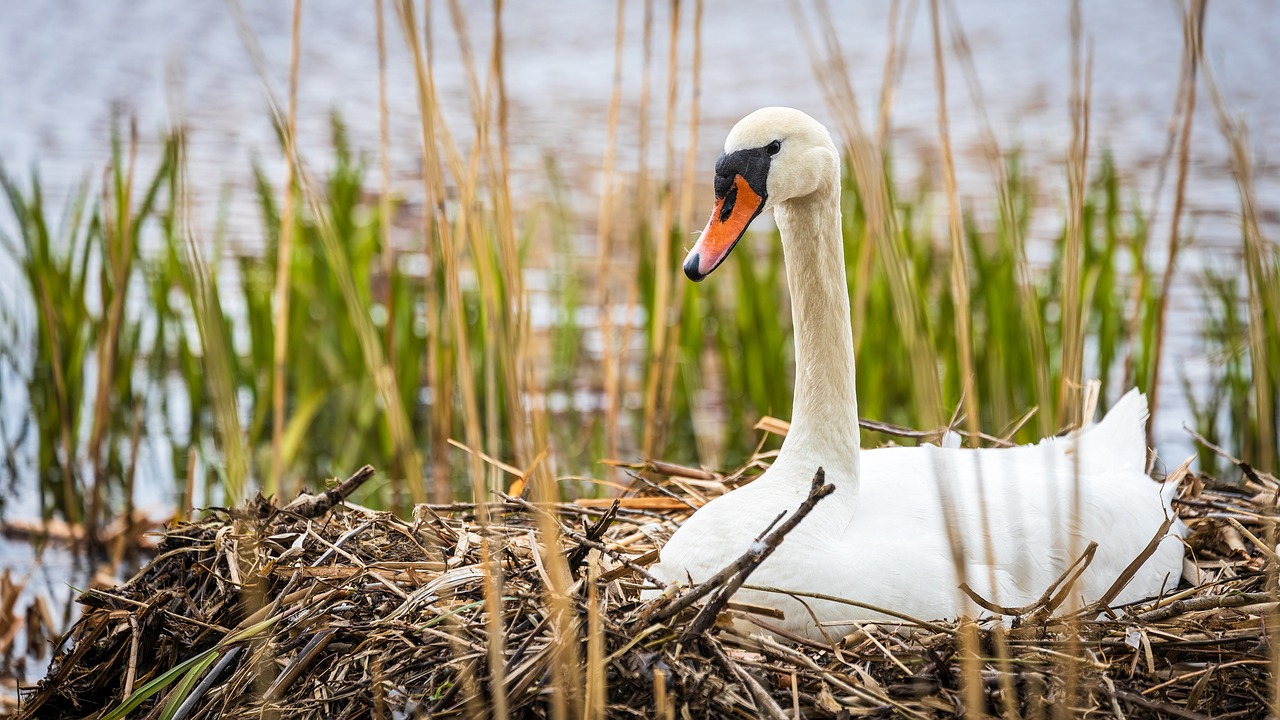
Habitat Fragmentation
Habitat fragmentation is one of the most significant and alarming consequences of climate change, and it poses a serious threat to wildlife. Imagine a beautiful, sprawling forest that is suddenly cut into pieces by roads, urban development, or agriculture. This dissection of habitats can leave wildlife isolated, struggling to find food, mates, and shelter. As species become confined to smaller areas, their chances of survival diminish. This phenomenon is akin to putting a puzzle together with missing pieces; the picture is incomplete, and the integrity of the ecosystem is compromised.
When habitats are fragmented, the consequences ripple through the ecosystem. Genetic diversity suffers because isolated populations are less likely to breed with one another, leading to inbreeding and a decline in overall health. This can make species more susceptible to diseases and reduce their ability to adapt to changing conditions. Furthermore, habitat fragmentation can disrupt migration patterns, making it even more challenging for species to find new territories or return to traditional breeding grounds.
Consider the plight of the majestic African elephant. These gentle giants require vast expanses of land to roam and forage. However, as their habitats shrink and fragment due to human activities, they are forced into smaller areas, leading to increased competition for resources and heightened human-wildlife conflicts. This not only threatens their survival but also affects the entire ecosystem, as elephants play a crucial role in maintaining the health of their habitats.
To better understand the impact of habitat fragmentation, let’s take a look at the following table that outlines some key effects:
| Effect of Habitat Fragmentation | Description |
|---|---|
| Isolation of Species | Populations become separated, reducing genetic diversity and increasing extinction risk. |
| Disruption of Migration | Animals may struggle to migrate due to barriers, affecting breeding and feeding. |
| Altered Ecosystem Dynamics | Changes in species interactions can lead to unexpected consequences in food webs. |
| Increased Human-Wildlife Conflict | As wildlife encroaches on human settlements, conflicts can arise, leading to harm for both parties. |
In conclusion, habitat fragmentation is a pressing issue that demands immediate attention. Without concerted conservation efforts, many species face a precarious future. Protecting and restoring habitats is not just about saving individual species; it’s about preserving the intricate web of life that sustains our planet. As we navigate the challenges posed by climate change, we must prioritize strategies that mitigate fragmentation and promote connectivity between habitats.
- What is habitat fragmentation? Habitat fragmentation refers to the process where larger habitats are divided into smaller, isolated patches, often due to human activities.
- How does habitat fragmentation affect wildlife? It can lead to decreased genetic diversity, disrupted migration patterns, and increased competition for resources, ultimately threatening species survival.
- What can be done to combat habitat fragmentation? Conservation efforts such as creating wildlife corridors, restoring habitats, and implementing sustainable land-use practices can help mitigate the effects of fragmentation.
- Why is genetic diversity important? Genetic diversity is crucial for the survival of species as it enhances their ability to adapt to environmental changes and resist diseases.
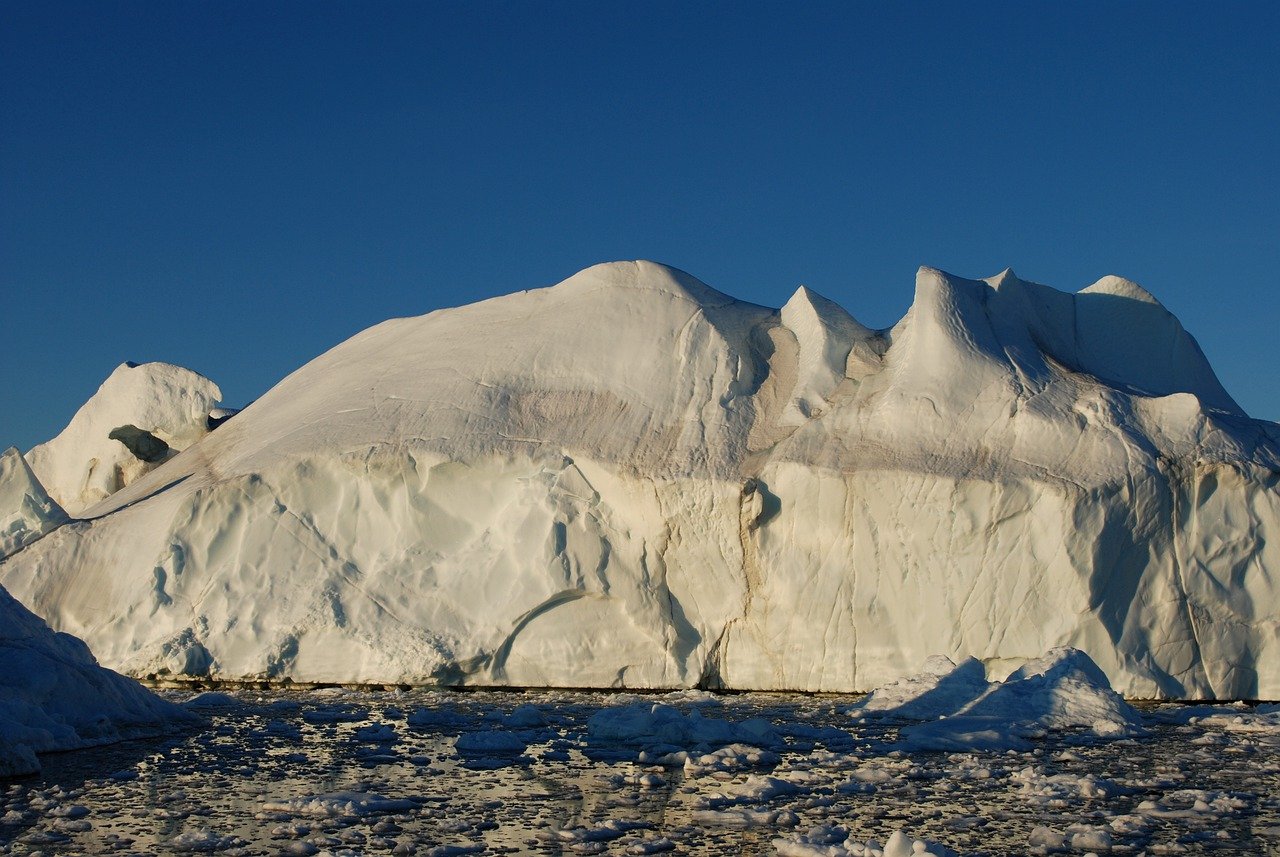
Effects on Aquatic Species
The effects of climate change on aquatic species are profound and alarming. As our planet warms, oceans, rivers, and lakes are undergoing significant transformations that threaten the delicate balance of aquatic ecosystems. One of the most pressing issues is the increase in water temperatures, which can lead to thermal stress for many fish and other aquatic organisms. For instance, species like salmon, which require cold, oxygen-rich waters, are finding their habitats increasingly inhospitable. This is not just a minor inconvenience; it can lead to reduced spawning success and increased mortality rates.
Moreover, the phenomenon of ocean acidification—a direct result of increased carbon dioxide emissions—poses a severe threat to marine life. When CO2 is absorbed by seawater, it reacts to form carbonic acid, leading to lower pH levels. This change can have catastrophic effects on organisms such as corals, mollusks, and some plankton species, which rely on calcium carbonate to build their shells and skeletons. The decline of coral reefs not only affects the species that inhabit these ecosystems but also impacts the countless human communities that depend on them for food and tourism.
Another significant impact of climate change on aquatic species is the alteration of nutrient cycles. Warmer temperatures can change the timing and location of nutrient upwelling, which is crucial for supporting the base of the marine food web. When these cycles are disrupted, it can lead to algal blooms, which deplete oxygen in the water and create "dead zones" where few organisms can survive. These blooms can also produce toxins that are harmful to both marine life and humans.
Furthermore, climate change is driving shifts in species distributions, leading to invasive species outcompeting native species for resources. As waters warm, species that once thrived in specific regions are migrating to cooler areas, often disrupting established ecosystems. This can lead to a domino effect, where the introduction of non-native species alters food webs and diminishes biodiversity. For example, the northern movement of certain fish species can threaten local fisheries and the livelihoods of communities that depend on them.
In summary, the impacts of climate change on aquatic species are multifaceted and interconnected. From rising temperatures and ocean acidification to shifts in nutrient availability and species distributions, the challenges are immense. Without immediate and concerted conservation efforts, we risk losing not only the rich biodiversity of our aquatic ecosystems but also the critical services they provide to humanity.
- How does climate change affect fish populations? Climate change can lead to warmer waters, which can stress fish, reduce spawning success, and lead to shifts in species distributions.
- What is ocean acidification? Ocean acidification occurs when CO2 is absorbed by seawater, leading to lower pH levels that affect marine organisms like corals and shellfish.
- Are invasive species a problem due to climate change? Yes, as species migrate to cooler areas due to warming waters, they can outcompete native species, disrupting local ecosystems.
- What can be done to protect aquatic species? Conservation efforts, including habitat protection, pollution reduction, and sustainable fishing practices, are essential to preserve aquatic biodiversity.
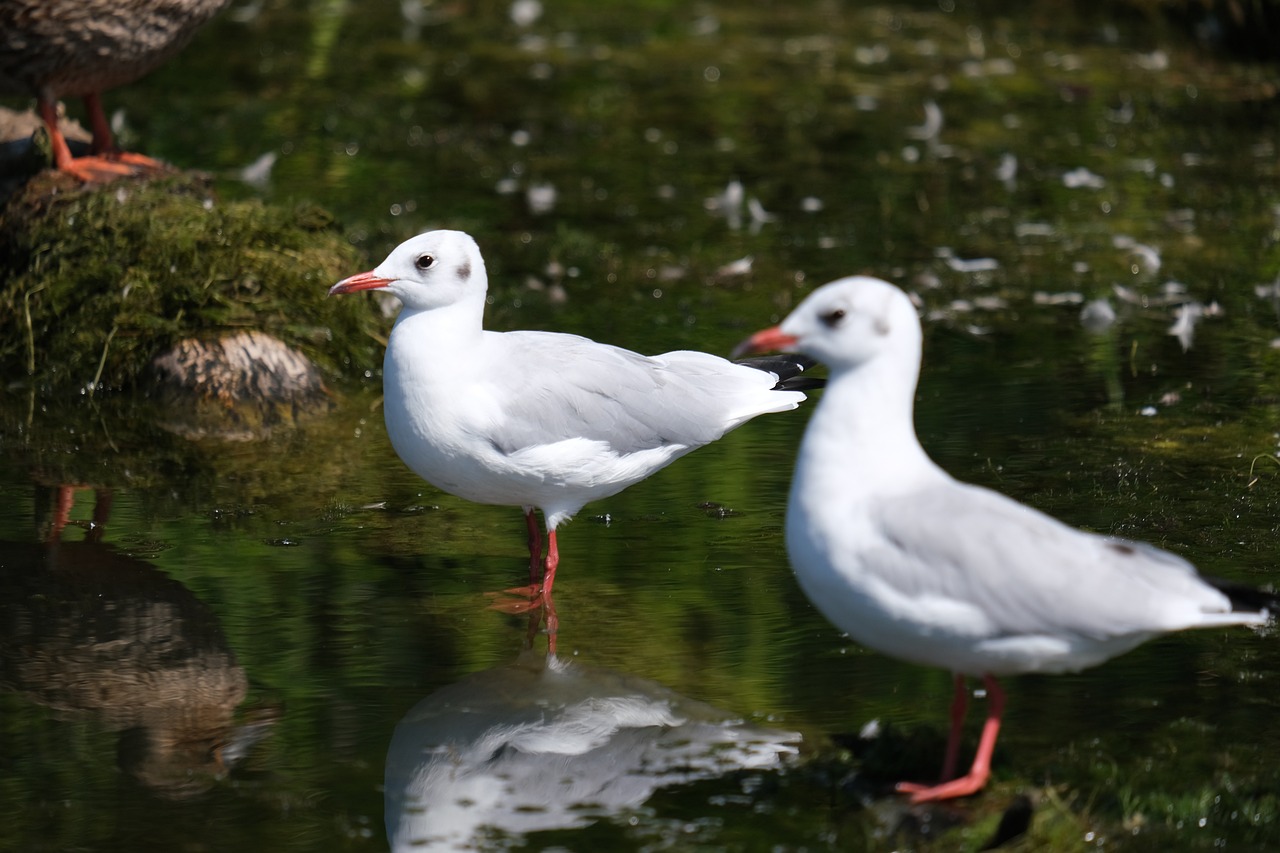
Threatened Species
As the world grapples with the escalating impacts of climate change, certain species find themselves teetering on the brink of extinction. The category encompasses those at heightened risk due to their declining populations and shrinking habitats. These species are not just numbers on a list; they represent the intricate tapestry of life on Earth, each playing a unique role in their ecosystems. The urgency to protect these vulnerable groups has never been more critical, as their survival is intimately linked to our own well-being.
Many factors contribute to the endangerment of species, with climate change being a significant player. Rising temperatures, altered precipitation patterns, and extreme weather events disrupt the delicate balance of ecosystems. For instance, polar bears, reliant on sea ice for hunting seals, face dire consequences as their habitat melts away. Similarly, amphibians like the golden toad, once thriving in Costa Rica, have vanished due to changing climates that altered their moisture-rich habitats.
According to the International Union for Conservation of Nature (IUCN), the following species are classified as critically endangered due to climate impacts:
| Species | Habitat | Primary Threats |
|---|---|---|
| Sumatran Orangutan | Tropical forests of Sumatra | Deforestation, climate change |
| Vaquita | Gulf of California | Bycatch, habitat loss |
| Snow Leopard | Mountain ranges in Central Asia | Climate change, poaching |
These species are not merely a statistic; they are part of a larger narrative that speaks to the health of our planet. When we lose a species, we lose a piece of our ecosystem's puzzle, which can lead to unforeseen consequences. For example, the extinction of a predator can lead to an overpopulation of prey species, which in turn can decimate vegetation and alter landscapes.
Conservation efforts are underway to protect these threatened species, but the clock is ticking. Organizations worldwide are implementing various strategies, from habitat restoration to anti-poaching initiatives. However, these efforts require not just funding and resources, but also a collective commitment from individuals, communities, and governments to prioritize biodiversity.
In conclusion, the plight of threatened species is a clarion call for action. We must recognize that our fates are intertwined with the natural world. Protecting these species is not just about saving wildlife; it’s about ensuring a sustainable future for all life on Earth. The more we understand and advocate for these vulnerable groups, the better equipped we will be to combat the challenges posed by climate change.
- What defines a threatened species? A threatened species is one that is likely to become endangered in the foreseeable future due to a variety of factors, including habitat loss, climate change, and human activities.
- How can individuals help protect threatened species? Individuals can contribute by supporting conservation organizations, reducing their carbon footprint, and advocating for policies that protect wildlife and their habitats.
- What role do governments play in protecting threatened species? Governments can enact laws and regulations aimed at conserving habitats, funding research, and creating protected areas to safeguard vulnerable species.
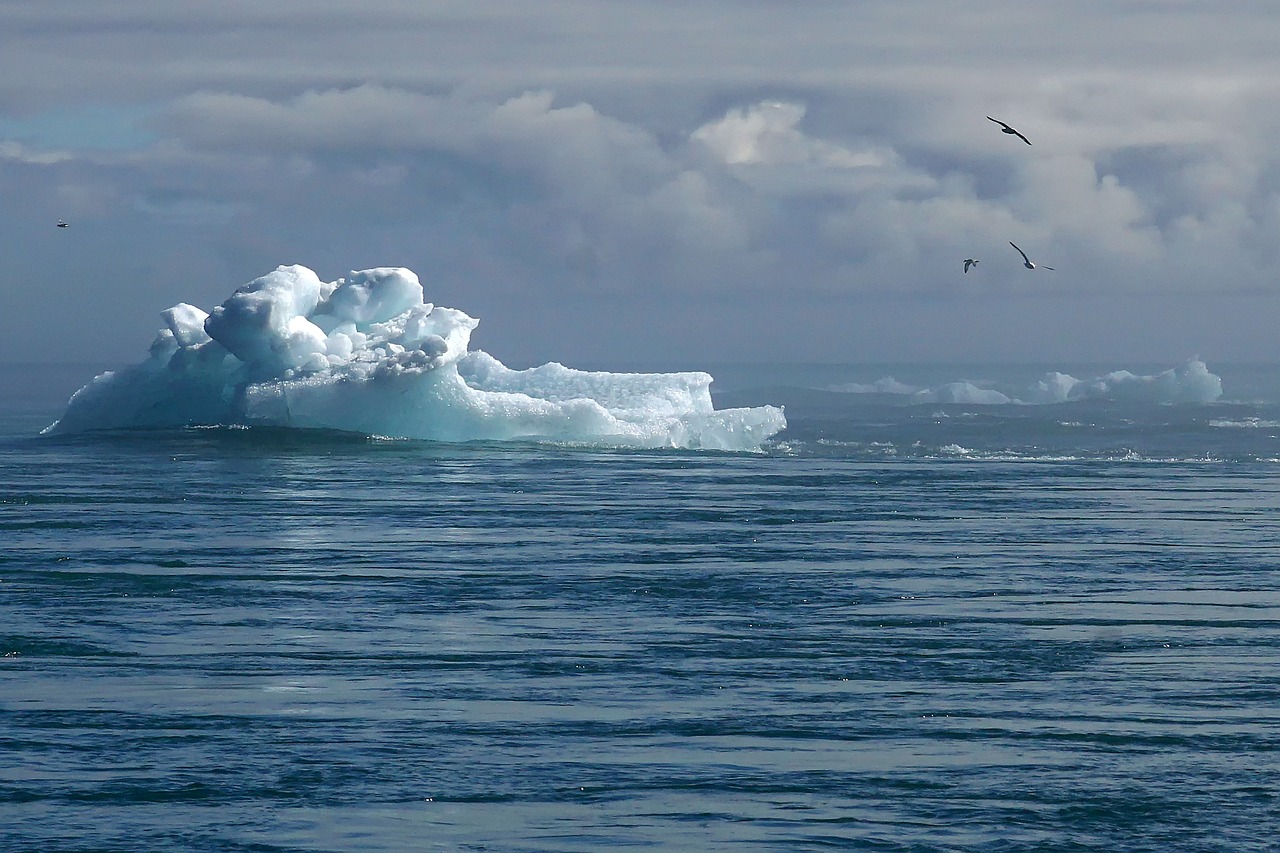
Endangered Species Lists
As we dive into the world of endangered species, it's crucial to understand that these lists are not just mere compilations of animals at risk; they represent the urgent call to action for conservation. The International Union for Conservation of Nature (IUCN) maintains a comprehensive list known as the Red List, which categorizes species based on their risk of extinction. This list is a vital tool for conservationists and policymakers alike, providing a snapshot of the health of our planet's biodiversity.
Species are classified into various categories, ranging from Least Concern to Critically Endangered. The criteria for these classifications include factors such as population size, rate of decline, geographic range, and the degree of threat from human activities and environmental changes. For instance, a species like the Sumatran orangutan is listed as Critically Endangered due to habitat loss from deforestation and illegal logging, while the Eastern gorilla faces similar threats, pushing it closer to extinction.
Here’s a brief overview of some categories from the IUCN Red List:
| Category | Description |
|---|---|
| Least Concern | Species that are widespread and abundant. |
| Near Threatened | Species that may become endangered in the near future. |
| Vulnerable | Species facing a high risk of extinction in the wild. |
| Endangered | Species that are at a very high risk of extinction in the wild. |
| Critically Endangered | Species that are facing an extremely high risk of extinction in the wild. |
| Extinct | Species that no longer exist. |
The urgency of protecting these species cannot be overstated. Each entry on the endangered species list is not just a number; it represents an entire ecosystem that is at risk of collapse. For example, the decline of the Amur leopard in the Russian Far East is not only a loss of a magnificent creature but also a signal of the deteriorating health of its habitat, which supports other flora and fauna.
Moreover, the conservation of endangered species often has a ripple effect on the entire ecosystem. Protecting a single species can lead to improved health for other species and the environment as a whole. This interconnectedness is a reminder that when one species suffers, many others do too. Therefore, understanding the criteria and implications of these endangered species lists is essential for anyone interested in wildlife conservation.
In the face of such challenges, numerous organizations and governments are mobilizing efforts to protect these endangered species. Initiatives range from habitat restoration to anti-poaching laws, all aimed at reversing the trends that lead to these dire classifications. It is a collective responsibility that requires global cooperation and local action to ensure that future generations can witness the beauty of these incredible species.
- What criteria are used to determine if a species is endangered?
The criteria include population size, rate of decline, geographic range, and threats from human activities. - How can individuals help endangered species?
Individuals can contribute by supporting conservation organizations, reducing their carbon footprint, and advocating for wildlife protection policies. - Are all endangered species equally at risk?
No, some species are more vulnerable than others due to specific threats and their ecological roles.
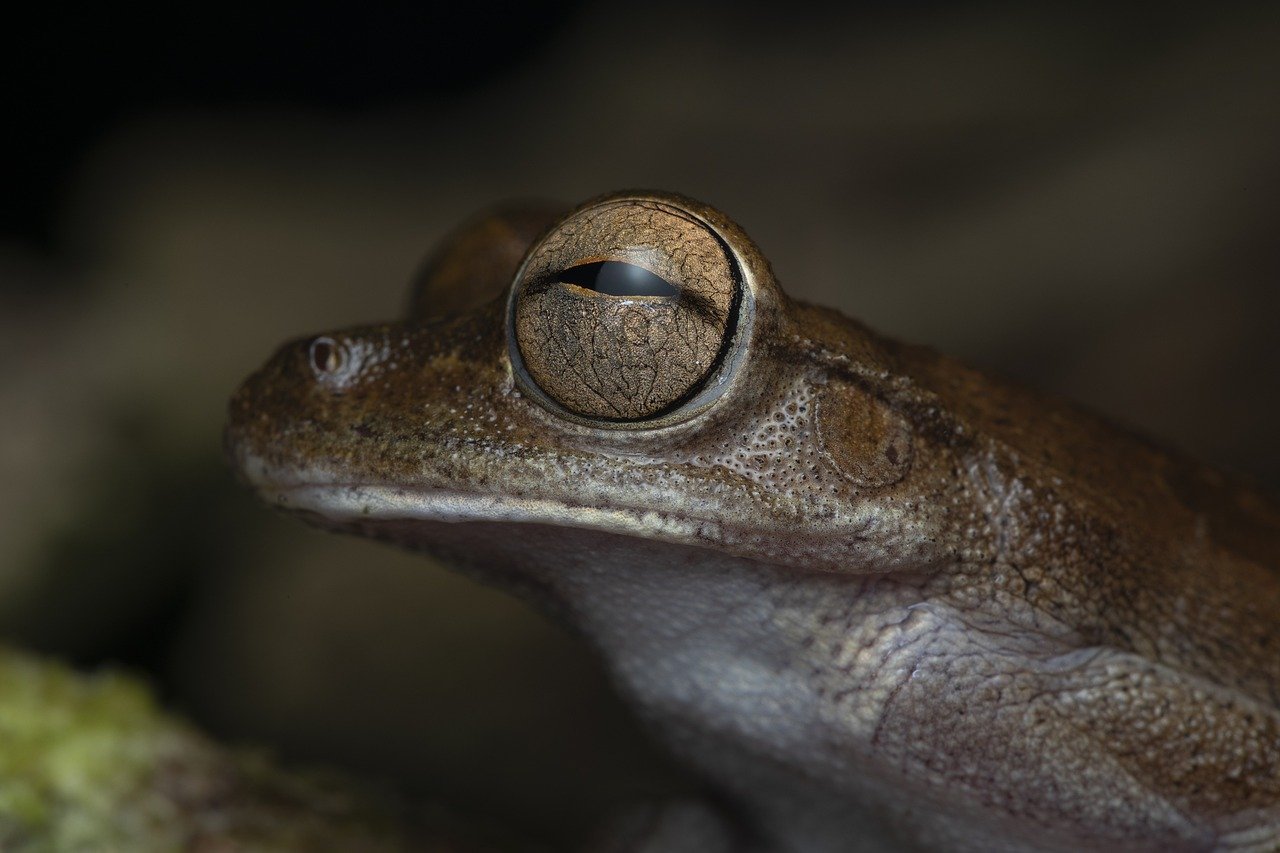
Conservation Strategies
As we face the daunting challenges posed by climate change, have become more critical than ever. These strategies are not just about protecting individual species but also about preserving entire ecosystems that are vital for the health of our planet. Effective conservation requires a multifaceted approach that combines science, policy, community engagement, and innovative practices. So, how do we go about it?
One of the most effective conservation strategies is the establishment of protected areas. National parks and wildlife reserves serve as sanctuaries for flora and fauna, allowing them to thrive without the pressures of human encroachment. However, simply creating these areas is not enough. They must be well-managed and connected to one another to form ecological corridors that enable species movement and genetic exchange. This connectivity is crucial as it allows wildlife to adapt to changing conditions and migrate in response to climate shifts.
Moreover, restoration ecology plays a significant role in conservation efforts. This involves rehabilitating degraded ecosystems to restore their natural functions and biodiversity. For example, reforestation projects not only help sequester carbon but also provide habitats for numerous species. The restoration of wetlands can improve water quality and offer crucial refuge for aquatic life. Each of these efforts contributes to a healthier environment, which in turn supports wildlife.
Additionally, community involvement is essential for successful conservation. Engaging local communities in conservation initiatives fosters a sense of ownership and responsibility towards the environment. When people understand the importance of biodiversity and the role it plays in their own lives, they are more likely to participate actively in protecting it. Educational programs and workshops can empower communities with the knowledge they need to make sustainable choices.
Another critical aspect is the integration of technology in conservation strategies. Tools such as satellite imagery, drones, and wildlife tracking devices allow conservationists to monitor ecosystems and wildlife populations more effectively. For instance, using drones to survey hard-to-reach areas can provide valuable data on habitat conditions and species distributions. Moreover, citizen science initiatives harness the power of the public to gather data, making it easier to track changes in biodiversity over time.
Lastly, policy advocacy is vital for creating a supportive framework for conservation efforts. Effective legislation can protect endangered species, regulate land use, and promote sustainable practices. International agreements, such as the Convention on Biological Diversity, aim to unite countries in their efforts to protect biodiversity on a global scale. By pushing for stronger environmental policies, we can ensure that conservation strategies are not only implemented but also prioritized.
In summary, the fight against climate change and its impact on wildlife requires a comprehensive approach that includes protected areas, restoration efforts, community engagement, technological innovation, and strong policies. Each of these components plays a crucial role in creating a resilient future for our planet's biodiversity. By working together, we can develop effective conservation strategies that safeguard our natural heritage for generations to come.
- What are the most effective conservation strategies?
Effective strategies include establishing protected areas, restoration ecology, community involvement, the use of technology, and policy advocacy. - How can local communities contribute to conservation?
Local communities can engage in conservation efforts through education, participating in restoration projects, and advocating for sustainable practices. - What role does technology play in conservation?
Technology helps in monitoring ecosystems, tracking wildlife, and gathering data through tools like drones and satellite imagery. - Why are protected areas important?
Protected areas serve as sanctuaries for wildlife, allowing them to thrive without human interference and providing critical habitats.
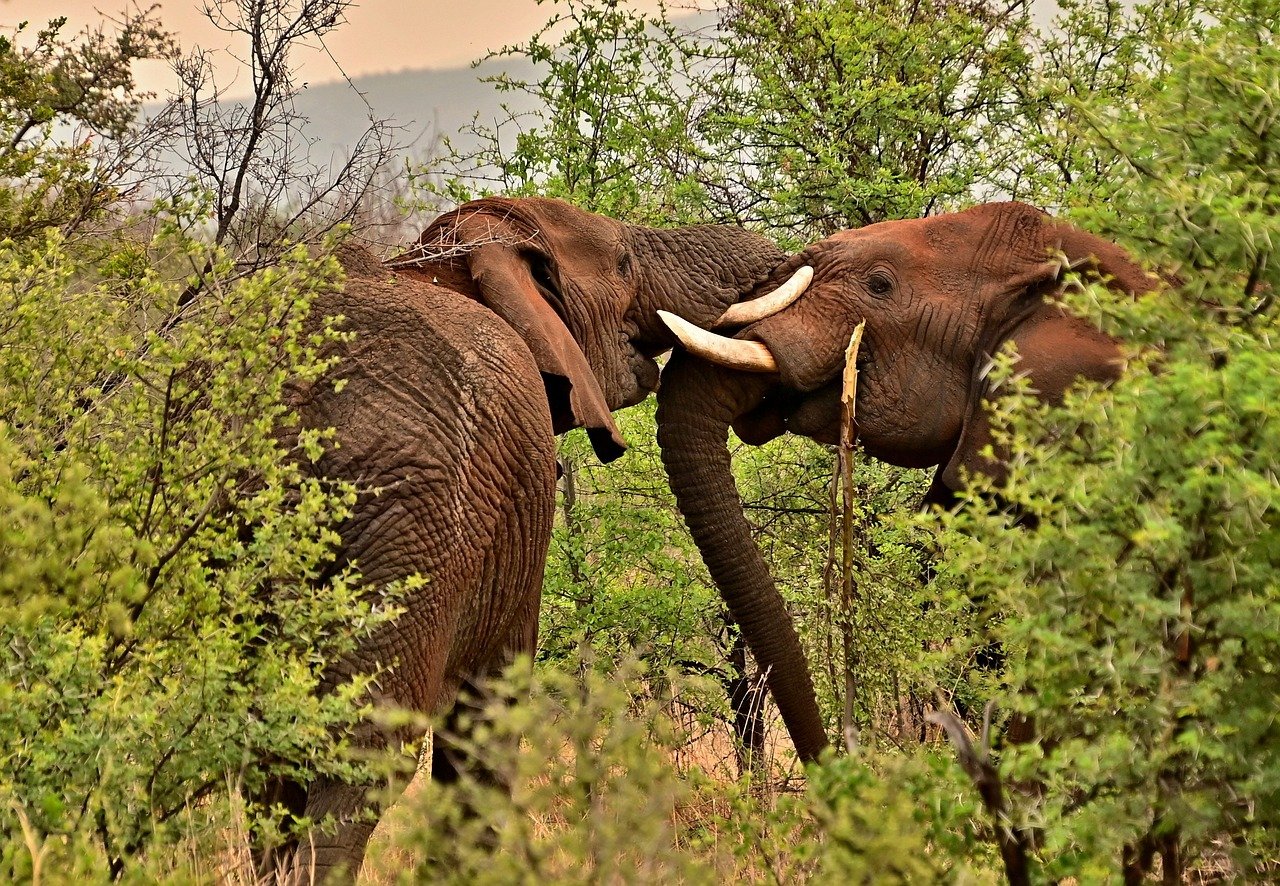
The Role of Human Activity
Human activity plays a pivotal role in the ongoing climate crisis, acting as both a catalyst for change and a barrier to effective solutions. From the moment we wake up, our daily choices—such as the energy we consume, the food we eat, and the modes of transportation we use—contribute to the emission of greenhouse gases. These emissions are the primary drivers of climate change, leading to disastrous effects on wildlife and biodiversity. But how exactly does our behavior affect the delicate balance of ecosystems?
One of the most significant ways human activity impacts the environment is through deforestation. Forests act as vital carbon sinks, absorbing carbon dioxide from the atmosphere. However, when we clear these areas for agriculture, urban development, or logging, we not only release stored carbon but also destroy habitats for countless species. Imagine a vibrant forest teeming with life, suddenly reduced to barren land. This loss of habitat leads to a domino effect, causing species to either adapt, migrate, or face extinction.
Another major contributor is urbanization. As cities expand, wildlife faces increasing pressure. Urban sprawl disrupts migratory routes and isolates populations, making it difficult for species to find mates and food. For instance, consider the plight of the Florida panther, which has seen its habitat shrink due to the relentless push of urban development. With fewer places to roam, these magnificent creatures are at risk of inbreeding, further compromising their survival.
Moreover, agriculture significantly affects biodiversity. The demand for food leads to the intensification of farming practices, which often involves the use of pesticides and fertilizers. These chemicals not only harm the targeted pests but also non-target species, including pollinators like bees and butterflies. Without these crucial pollinators, many plants—including those we rely on for food—struggle to reproduce. Picture a world without apples, almonds, or blueberries; it’s a stark reminder of how interconnected our food systems are with wildlife.
However, it’s not all doom and gloom. There are proactive measures we can take to mitigate the effects of human activity on climate change. Through sustainable practices, we can reduce our carbon footprint and protect our planet’s biodiversity. For example, adopting renewable energy sources, such as solar and wind, can significantly lower greenhouse gas emissions. Additionally, initiatives aimed at reforestation and habitat restoration can help revive ecosystems that have been damaged by human intervention.
To illustrate the impact of human activities on biodiversity, consider the following table that summarizes key actions and their consequences:
| Human Activity | Impact on Biodiversity |
|---|---|
| Deforestation | Loss of habitat, increased carbon emissions |
| Urbanization | Habitat fragmentation, increased human-wildlife conflict |
| Agricultural Expansion | Loss of pollinators, soil degradation |
| Pollution | Water quality degradation, harm to aquatic life |
As individuals, we have the power to influence change. Simple actions, like reducing waste, supporting sustainable products, and advocating for wildlife conservation, can collectively make a significant impact. It's crucial to recognize that every choice counts. Are we willing to embrace our responsibility and take action for the sake of future generations?
- What are the main human activities contributing to climate change? The primary activities include deforestation, fossil fuel consumption, industrial processes, and agricultural expansion.
- How does climate change affect wildlife? Climate change alters habitats, disrupts migration patterns, and affects food availability, leading to increased vulnerability and potential extinction for many species.
- What can individuals do to help mitigate climate change? Individuals can reduce their carbon footprint by using public transport, recycling, supporting renewable energy, and advocating for conservation efforts.
- Are there successful conservation strategies in place? Yes, many organizations are implementing strategies such as habitat restoration, wildlife corridors, and legal protections for endangered species.
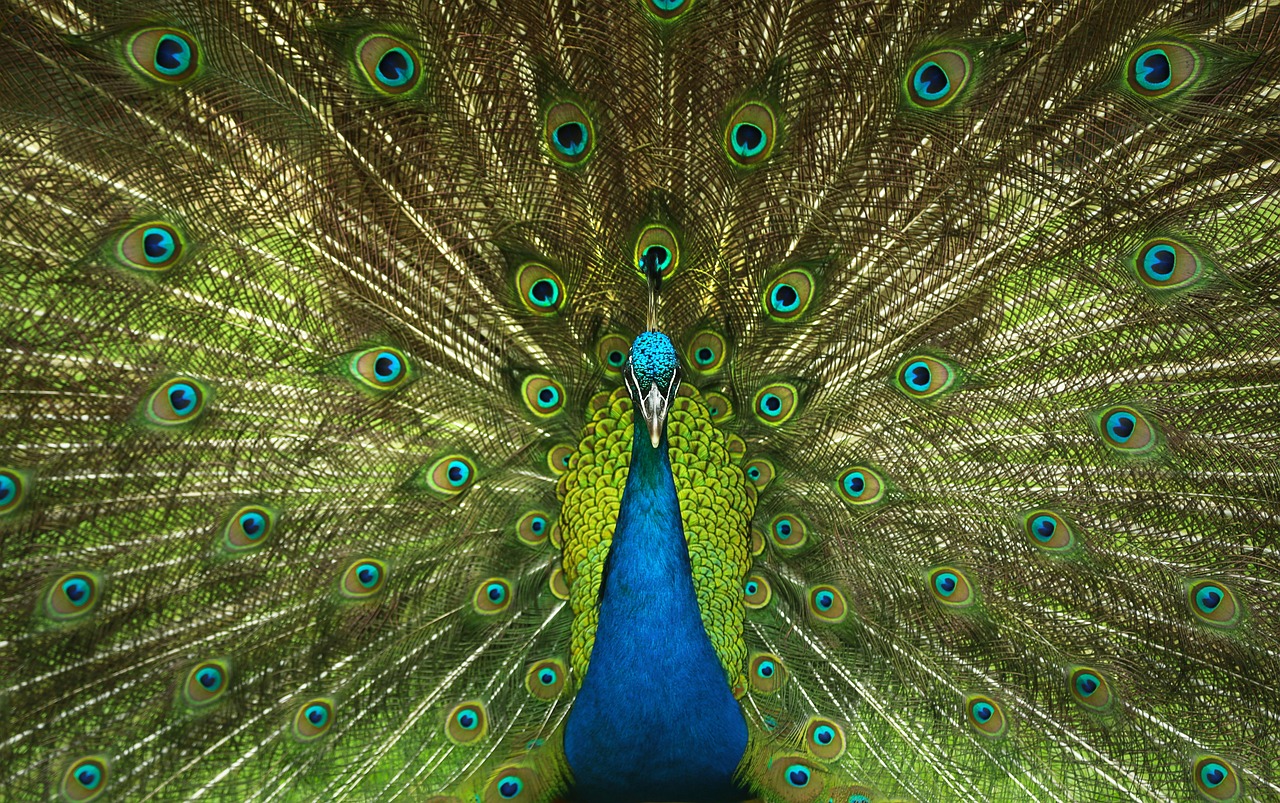
Urbanization and Wildlife
Urbanization is like a double-edged sword; on one side, it brings progress and development, while on the other, it poses severe threats to wildlife and their habitats. As cities expand, they often encroach upon natural landscapes, leading to the destruction of ecosystems that countless species depend on. Imagine a once-thriving forest, bustling with life, now replaced by concrete jungles and asphalt roads. This transformation not only affects the animals that call these habitats home but also disrupts the delicate balance of nature.
When urban areas expand, wildlife faces numerous challenges, including habitat loss, increased pollution, and human-wildlife conflicts. For instance, many animals are forced to adapt to fragmented environments, where they must navigate through patches of green amidst sprawling urban developments. This fragmentation can lead to isolation, making it difficult for species to find mates, food, and shelter. In some cases, it can even result in local extinctions.
Furthermore, urbanization can severely impact the availability of resources that wildlife needs to thrive. As cities grow, natural food sources become scarce, pushing animals to venture into urban areas in search of sustenance. This often leads to conflicts between humans and wildlife, as animals like raccoons, deer, and coyotes scavenge through garbage or wander into neighborhoods. These encounters can be dangerous for both parties, highlighting the urgent need for strategies that promote coexistence.
To mitigate the negative impacts of urbanization on wildlife, cities can adopt several innovative strategies. For example, creating green spaces such as parks, wildlife corridors, and urban gardens can provide essential habitats for various species. These areas not only support biodiversity but also enhance the quality of life for city dwellers. Additionally, implementing sustainable urban planning can help minimize habitat destruction and promote the integration of nature into urban environments.
| Urbanization Impact | Wildlife Response |
|---|---|
| Habitat Loss | Migration to new areas |
| Pollution | Health issues and decreased reproduction |
| Human-Wildlife Conflicts | Increased fatalities and stress |
| Resource Scarcity | Adaptation or starvation |
In conclusion, while urbanization is an inevitable aspect of modern life, it is crucial to recognize its profound effects on wildlife. By adopting sustainable practices and fostering a harmonious relationship between urban development and nature, we can ensure that both humans and wildlife can coexist peacefully. After all, a city that embraces its natural surroundings is not just a place to live; it’s a thriving ecosystem where all forms of life can flourish together.
- How does urbanization affect wildlife habitats? Urbanization leads to habitat loss and fragmentation, making it difficult for wildlife to find food, mates, and shelter.
- What are some solutions to mitigate urbanization's impact on wildlife? Solutions include creating green spaces, wildlife corridors, and implementing sustainable urban planning practices.
- Why do animals venture into urban areas? Animals venture into urban areas in search of food and shelter due to resource scarcity in their natural habitats.
- What can individuals do to help wildlife in urban settings? Individuals can create wildlife-friendly gardens, support local conservation efforts, and advocate for sustainable urban policies.
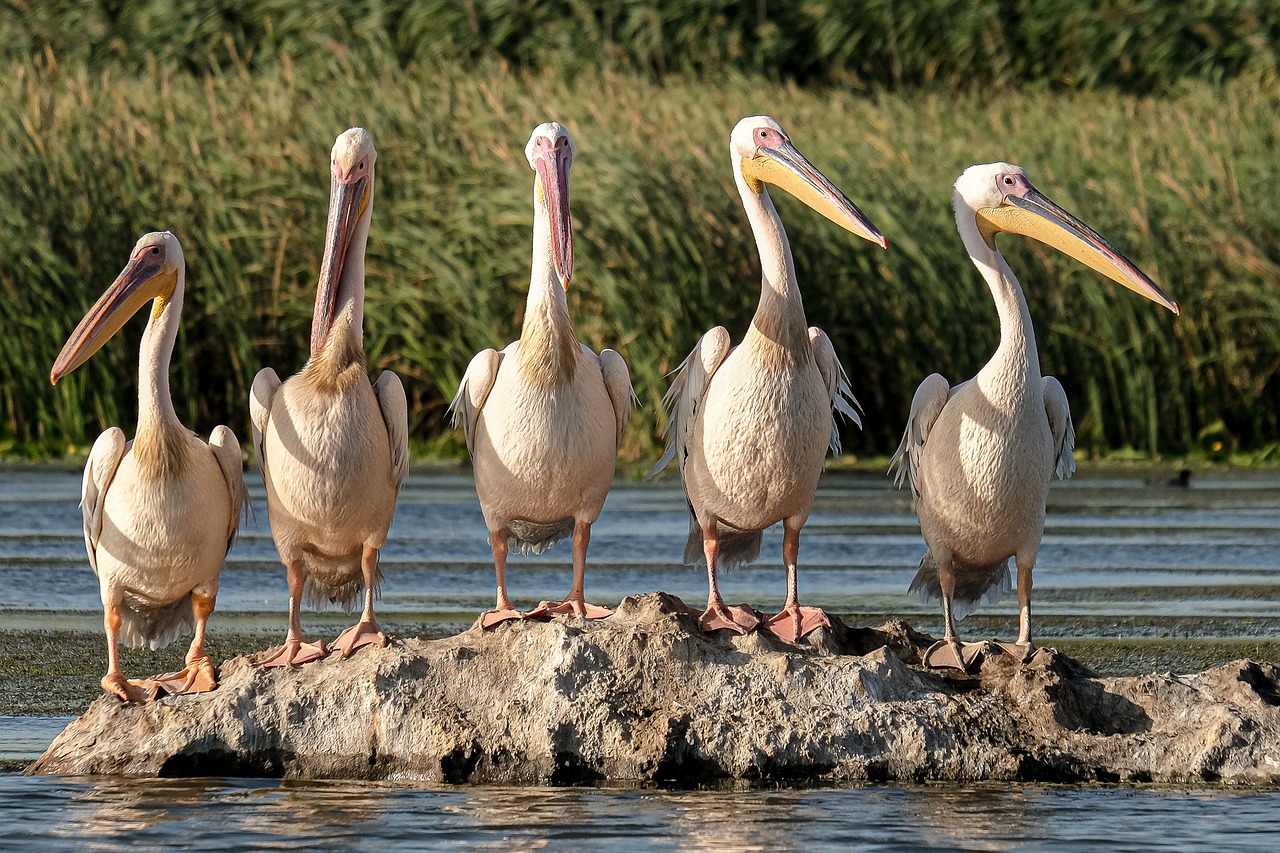
Climate Policy and Biodiversity
Climate change is no longer a distant threat; it's a pressing reality that demands immediate action. The connection between climate policy and biodiversity is crucial, as effective legislation can significantly influence the health of our ecosystems. When governments implement robust climate policies, they create frameworks that not only aim to reduce greenhouse gas emissions but also protect vulnerable wildlife and their habitats. Think of it as a safety net for nature, catching the species that are falling through the cracks due to climate change.
One of the key aspects of climate policy is its ability to promote sustainable practices. For instance, policies that encourage the use of renewable energy sources, such as wind and solar, help to reduce our reliance on fossil fuels, which are a major contributor to climate change. This shift not only benefits the atmosphere but also has a positive ripple effect on biodiversity. Cleaner air and water mean healthier ecosystems, which in turn support a wider variety of species. It's like turning down the volume on a noisy party so that everyone can hear themselves think—nature needs its space to thrive.
Moreover, international agreements such as the Paris Agreement play a pivotal role in aligning global efforts to combat climate change. These agreements often include commitments to protect biodiversity, recognizing that a healthy planet is essential for human survival and well-being. Countries that participate in these agreements are more likely to implement policies that protect endangered species and their habitats. It's a collective effort, much like a team working together to win a championship—everyone has to play their part.
However, the effectiveness of climate policies is often hindered by various challenges. For example, political will can fluctuate with changes in leadership, and funding for conservation projects can be inconsistent. This inconsistency can lead to a lack of long-term strategies for protecting biodiversity. Additionally, some policies may inadvertently harm wildlife if not carefully designed. For instance, the expansion of agricultural land to meet food demands can lead to habitat destruction. Thus, policymakers must ensure that their strategies are holistic and consider the intricate web of life that exists within ecosystems.
To illustrate the impact of climate policies on biodiversity, consider the following table that highlights successful initiatives from around the world:
| Country | Policy Initiative | Impact on Biodiversity |
|---|---|---|
| Germany | Renewable Energy Sources Act | Increased habitats for pollinators and reduced emissions |
| Brazil | Forest Code | Protection of the Amazon rainforest, home to countless species |
| New Zealand | Zero Carbon Act | Enhanced conservation efforts for native species |
In conclusion, climate policy is not just about reducing carbon footprints; it is about preserving the rich tapestry of life on Earth. As we move forward, it is imperative that we advocate for policies that prioritize biodiversity alongside climate action. After all, a thriving planet is beneficial not only for wildlife but for humanity as well. The choices we make today in policy and governance will echo through generations, determining the fate of countless species and the ecosystems they inhabit.
- What is the relationship between climate change and biodiversity?
Climate change affects ecosystems, leading to habitat loss, altered species interactions, and increased extinction rates. - How can climate policies help protect endangered species?
By implementing sustainable practices and habitat protection measures, effective climate policies can create safer environments for endangered species. - What are some examples of successful climate policies?
Examples include Germany's Renewable Energy Sources Act and Brazil's Forest Code, which have both contributed positively to biodiversity. - Why is international cooperation important in climate policy?
Climate change is a global issue that requires collective action; international agreements help unify efforts and set common goals.
Frequently Asked Questions
- What are the main impacts of climate change on wildlife?
Climate change significantly affects wildlife by altering habitats, changing migration patterns, and impacting food availability. As temperatures rise and precipitation patterns shift, many species struggle to adapt, leading to population declines and even extinction for some.
- How does climate change affect species migration?
As climates shift, many species are forced to migrate to more suitable environments. This can lead to altered interactions between species, as newcomers may compete for resources with native populations, potentially disrupting local ecosystems.
- Which species are most at risk due to climate change?
Species that are already endangered or have limited habitats are particularly vulnerable. This includes polar bears, certain amphibians, and many coral species. Conservation efforts are crucial to protect these at-risk populations and their habitats.
- What role do humans play in climate change and its effects on biodiversity?
Human activities, such as deforestation, pollution, and urbanization, contribute significantly to climate change. These actions not only exacerbate climate issues but also directly disrupt wildlife habitats and ecosystems, making it essential for us to adopt sustainable practices.
- What conservation strategies are effective in combating the effects of climate change?
Effective strategies include habitat restoration, creating wildlife corridors, and implementing protective legislation. Engaging local communities in conservation efforts and promoting biodiversity-friendly practices are also vital for long-term success.
- How does urbanization impact wildlife?
Urbanization disrupts natural habitats, leading to habitat fragmentation and isolation of wildlife populations. This can hinder breeding and reduce genetic diversity, making species less resilient to environmental changes.
- What can individuals do to help combat climate change?
Individuals can make a difference by reducing their carbon footprint, supporting sustainable products, and advocating for policies that protect the environment. Simple actions like using public transport, conserving energy, and supporting conservation organizations can collectively have a significant impact.



















